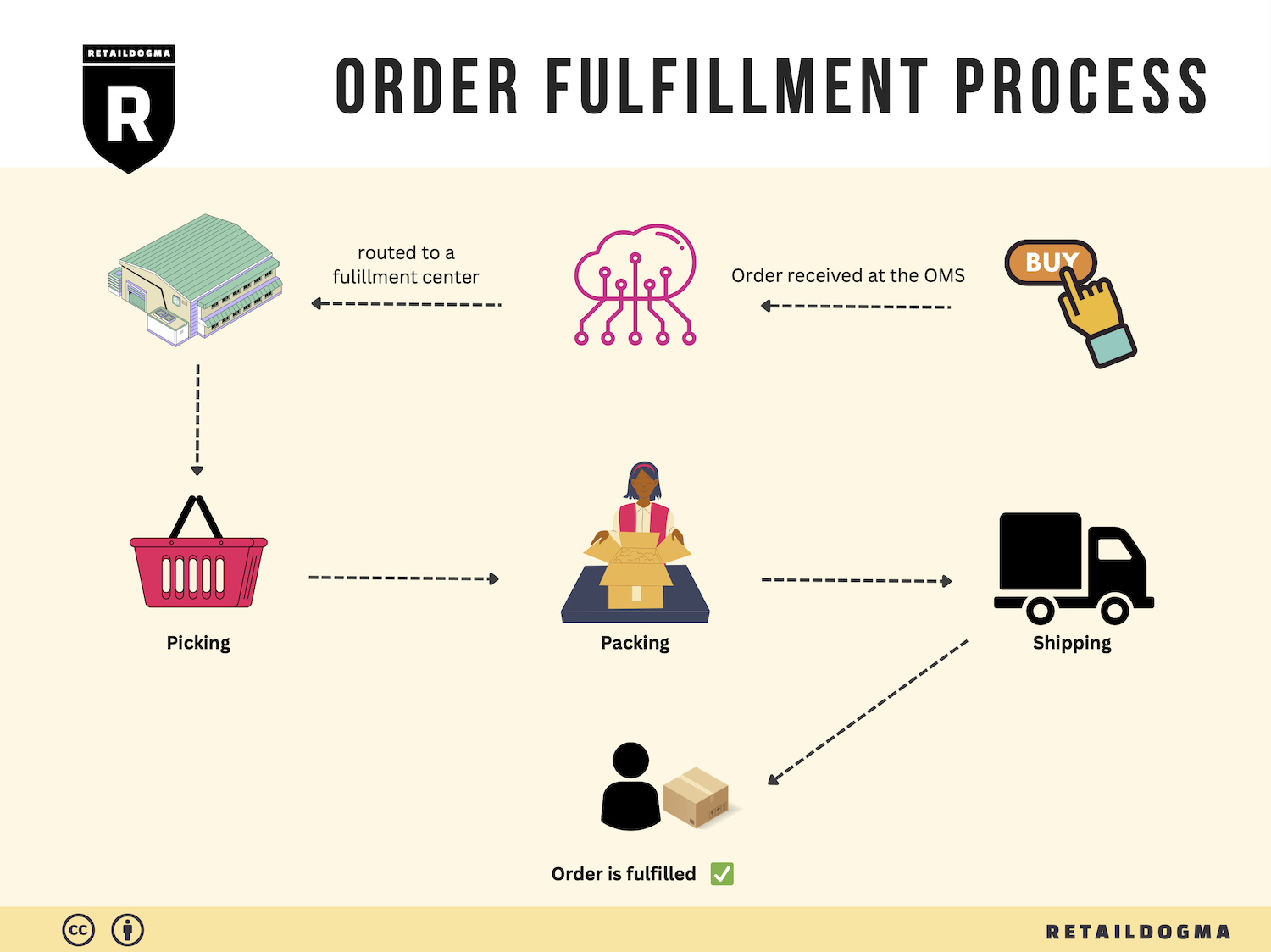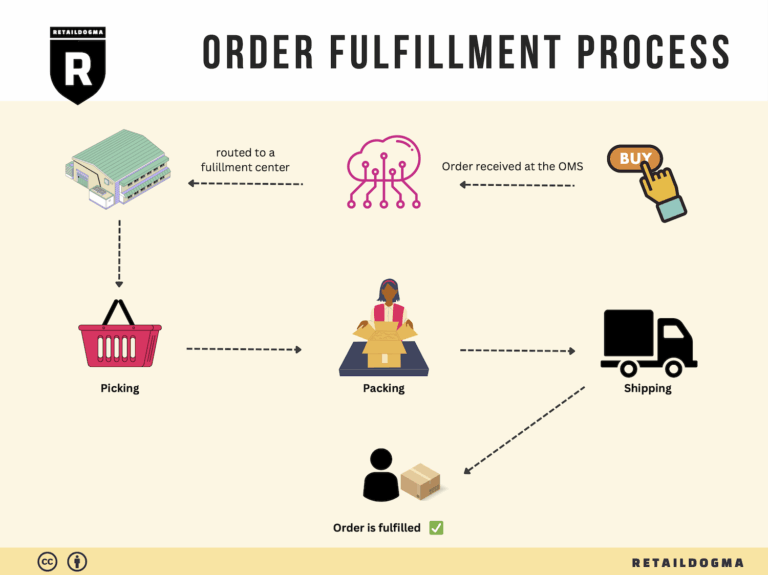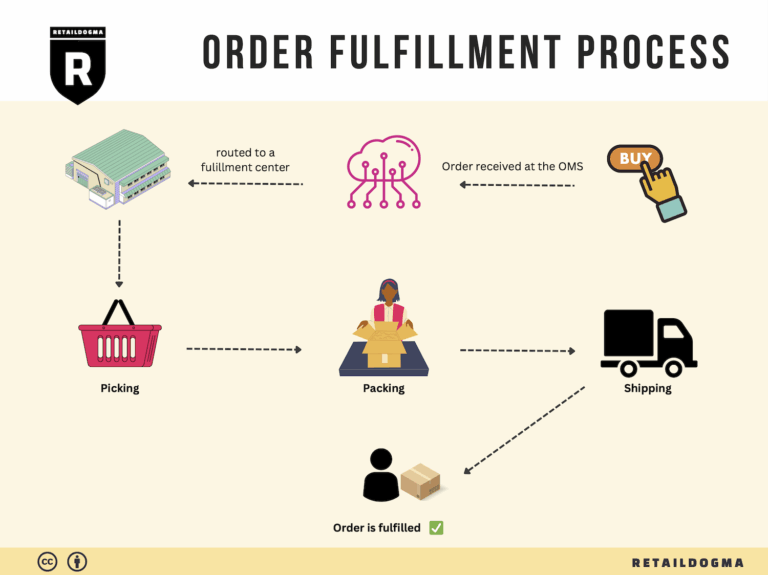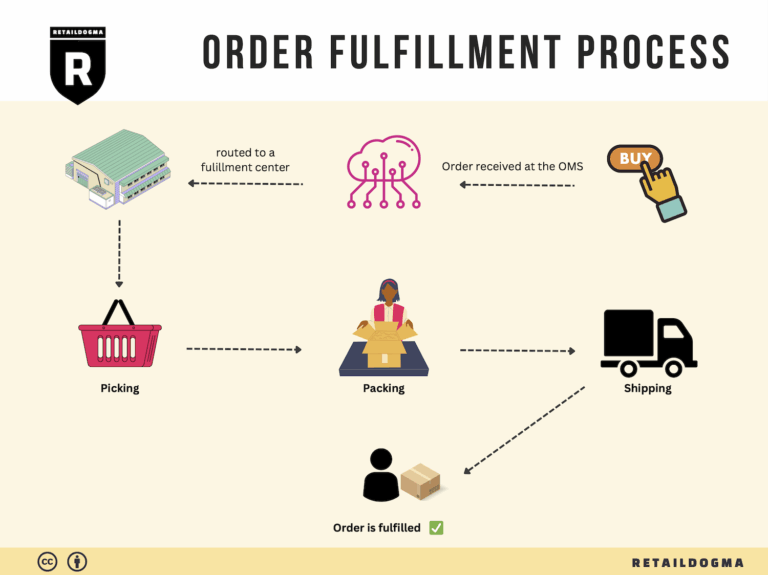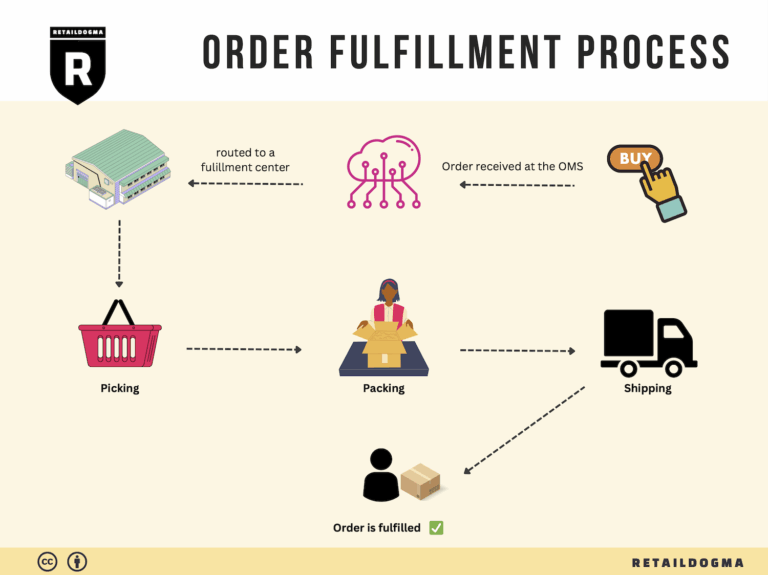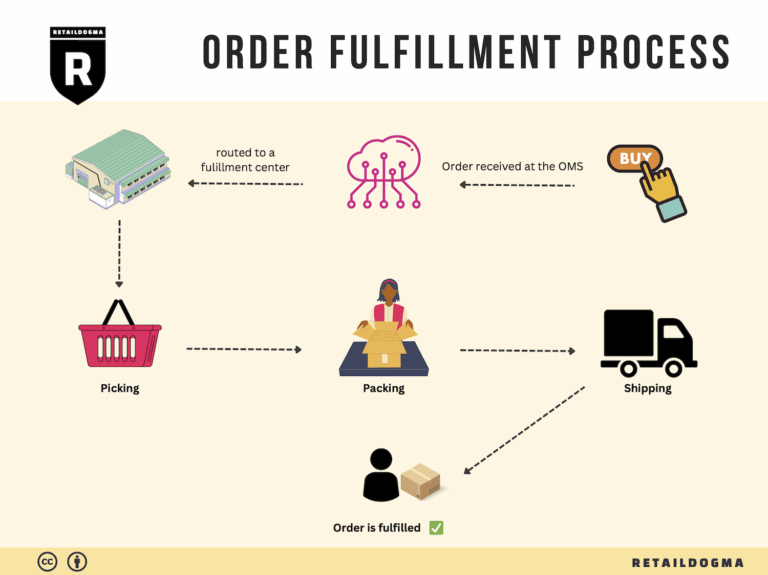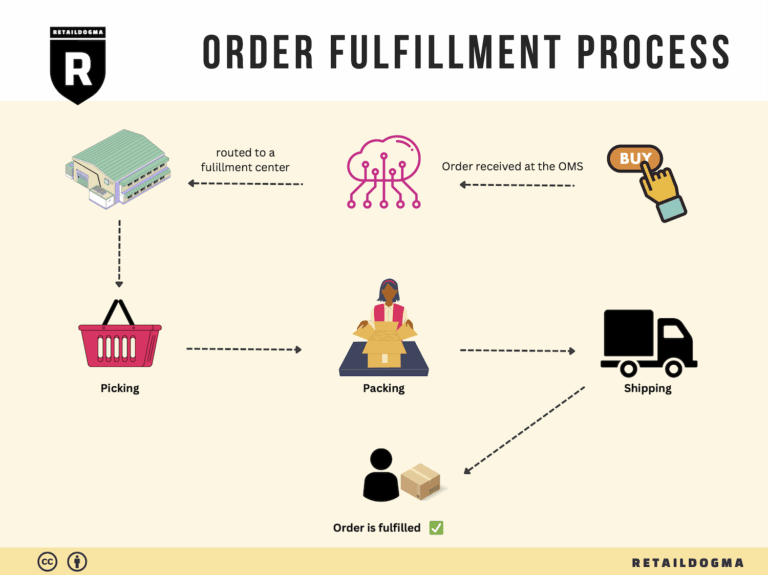Ecommerce Fulfillment Services: The Ultimate Guide (2025)
What is E-commerce Fulfillment? An Introduction for Growing Businesses
Understanding E-commerce Fulfillment
For many growing online businesses, the excitement of making sales can quickly turn into overwhelm when faced with the logistics of packing and shipping orders. As your sales increase, so does the complexity of fulfilling those orders efficiently and accurately. This is where e-commerce fulfillment comes into play. At its core, fulfillment is the process of getting a product from your inventory into the hands of a customer, and it encompasses everything from inventory management to shipping logistics.
In this guide, we will explore the various fulfillment models available to e-commerce businesses, including Fulfillment by Amazon (FBA) and third-party logistics (3PL). Each model has its own set of advantages and challenges, and understanding these can help you select the right approach for your business.
Key Components of Fulfillment
We will break down the core services involved in the fulfillment process, such as warehousing, order processing, packing, and shipping. Additionally, we will discuss the importance of inventory management and how it impacts your overall fulfillment strategy.
Choosing the right fulfillment partner is crucial for your business’s success. We will provide insights on what to look for in a partner, including scalability, technology integration, and customer service. Making an informed choice can help streamline your operations and allow you to focus on growth rather than getting bogged down in logistics.
Pricing Considerations
Understanding the pricing structure of fulfillment services is essential for budgeting and profitability. We will cover the various fees associated with different fulfillment models, such as storage fees, shipping costs, and any additional charges that may arise. By knowing what to expect, you can better assess the impact on your bottom line.
Empowering Smart Decisions
The goal of this guide is to empower e-commerce business owners and operations managers with the knowledge needed to make smart decisions about their logistics. By understanding the intricacies of e-commerce fulfillment, you can optimize your supply chain, enhance customer satisfaction, and ultimately drive your business’s growth. Whether you’re just starting out or looking to scale, mastering fulfillment is key to your success in the competitive e-commerce landscape.
What You’ll Learn In This Guide
- What is E-commerce Fulfillment? An Introduction for Growing Businesses
- The Order Fulfillment Process: From ‘Buy’ Button to Customer’s Door
- Comparing Fulfillment Models: In-House vs. 3PL vs. Dropshipping
- A Deep Dive into Amazon FBA: Pros, Cons, and Who It’s For
- Core Services Offered by Fulfillment Centers
- How to Choose a Fulfillment Partner: A 6-Point Checklist
- Understanding Fulfillment Pricing: A Breakdown of Common Fees
- Frequently Asked Questions (FAQs) about Fulfillment
- Conclusion: Is Outsourcing Fulfillment the Right Move for Your Business?
- Important Disclaimer
The Order Fulfillment Process: From ‘Buy’ Button to Customer’s Door
1. Receiving Inventory
The order fulfillment process begins with receiving inventory from suppliers. This step involves checking the delivery against purchase orders to ensure that the right quantity and type of products have been delivered. Each product is assigned a Stock Keeping Unit (SKU), a unique identifier that helps in tracking inventory throughout the fulfillment process.
Importance: Proper receiving is crucial as it lays the groundwork for efficient inventory management. Mistakes made during this stage can lead to stock discrepancies, which can affect order accuracy and customer satisfaction. Accurate receiving ensures that the inventory is available for future orders and minimizes the risk of stockouts.
2. Warehouse Storage
Once the inventory is received, it is stored in designated areas within the warehouse. Products are organized based on various criteria, such as size, weight, and demand frequency. This organization may involve the use of bin locations or shelving units, which also incorporate the SKU system for quick identification.
Importance: Efficient storage is vital for optimizing space and ensuring that products can be easily accessed when orders are placed. Properly organized inventory minimizes the time spent searching for products and reduces the chances of errors during the picking process. Effective warehouse storage strategies can lead to improved operational efficiency and reduced fulfillment costs.
3. Order Picking
When a customer places an order, the fulfillment process moves to the picking stage. This involves retrieving the ordered items from their storage locations. Pick lists, which detail the items and quantities needed for each order, are generated to guide warehouse staff in this process. Depending on the fulfillment model, this can be done manually or through automated systems.
Importance: Order picking is a critical step that directly impacts order accuracy and fulfillment speed. Errors during picking can lead to customer dissatisfaction and increased return rates. Streamlined picking processes, such as batch picking or wave picking, can enhance efficiency, allowing for multiple orders to be processed simultaneously.
4. Order Packing
After the items are picked, they are transported to the packing station. Here, products are carefully packed into boxes or envelopes, ensuring they are secure for transit. This step often involves the use of packing slips, which include order details and return instructions. Additionally, businesses may utilize branded packaging to enhance customer experience and reinforce brand identity.
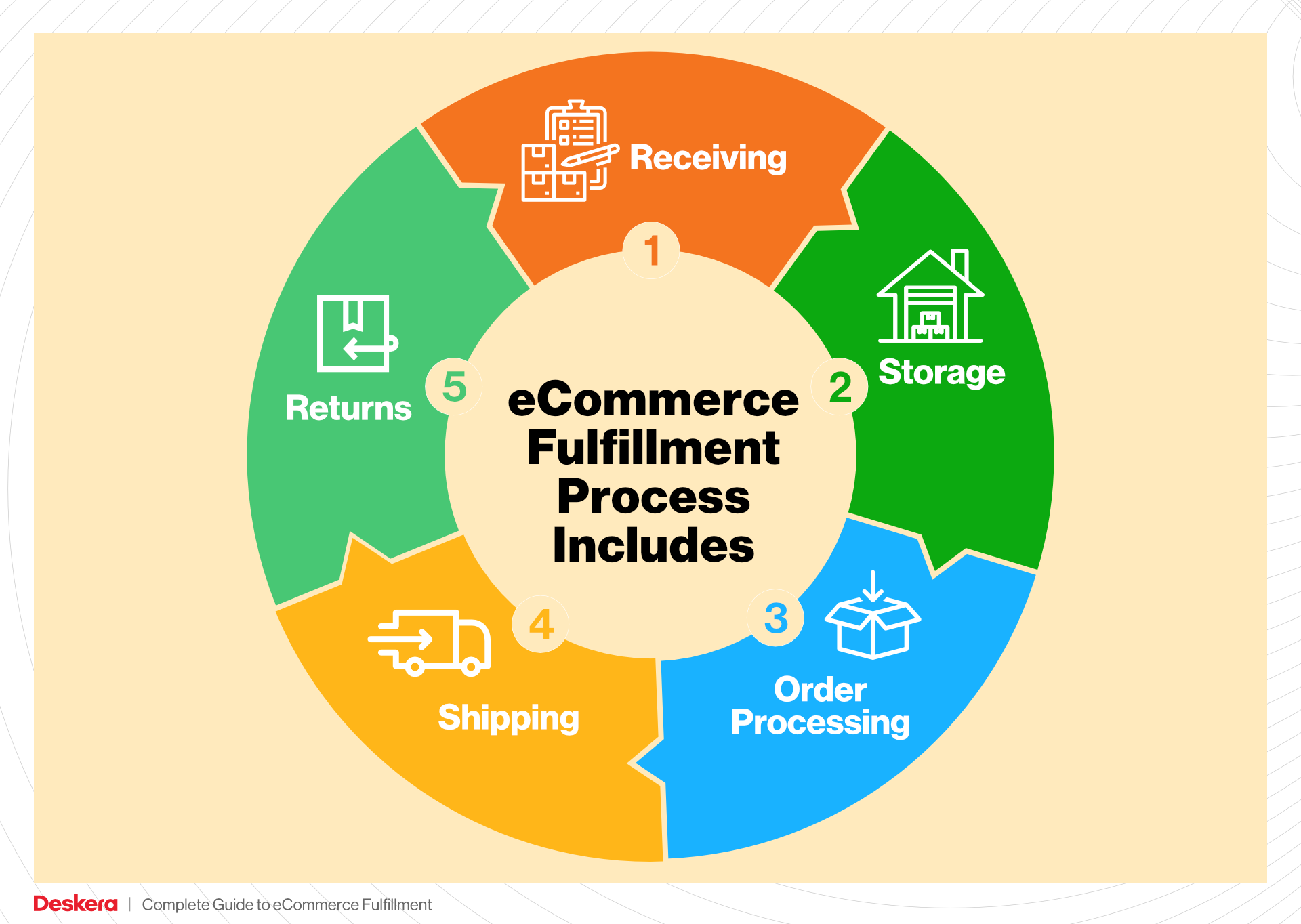
Importance: Effective packing is essential for protecting products during shipping and ensuring that they arrive in good condition. Poor packing can result in damaged goods, leading to returns and customer complaints. Furthermore, a well-executed packing process can streamline shipping operations, reducing the likelihood of delays and ensuring timely delivery.
5. Shipping & Delivery
The final step in the fulfillment process is shipping the packed orders to customers. This involves selecting the appropriate shipping carrier based on factors such as cost, speed, and reliability. Tracking numbers are generated and provided to customers, allowing them to monitor their order’s journey.
Importance: Timely and accurate shipping is critical for customer satisfaction and retention. The shipping process can significantly affect a customer’s perception of the brand. By optimizing shipping methods and maintaining strong relationships with carriers, businesses can enhance delivery speed and reduce shipping costs. Furthermore, offering multiple shipping options can cater to different customer preferences, further improving the overall shopping experience.
In conclusion, understanding and optimizing each step of the order fulfillment process is vital for e-commerce businesses aiming to scale effectively. By focusing on these key areas—receiving inventory, warehouse storage, order picking, order packing, and shipping & delivery—business owners can enhance operational efficiency, reduce costs, and improve customer satisfaction.
Comparing Fulfillment Models: In-House vs. 3PL vs. Dropshipping
Fulfillment Model Comparison
| Model | Who Handles Inventory | Best For (Business Stage) | Key Advantage | Key Disadvantage |
|---|---|---|---|---|
| In-House Fulfillment | The e-commerce business itself | Established businesses with stable demand | Complete control over inventory and fulfillment processes | High overhead costs and resource requirements |
| Third-Party Logistics (3PL) | A third-party logistics provider | Growing businesses looking to scale | Flexibility and access to expertise without heavy investment | Less control over inventory and potential communication issues |
| Dropshipping | Supplier or manufacturer | Startups or businesses testing new markets | Low upfront investment and risk | Lower profit margins and less control over product quality |
In-House Fulfillment
In-house fulfillment is a model where the e-commerce business manages its own inventory and order fulfillment process. This involves handling everything from storage and packing to shipping and customer service. This model is best suited for established businesses that have a steady demand for their products and the resources to manage logistics effectively. The key advantage of in-house fulfillment is the complete control it provides over the entire supply chain. Businesses can implement their own quality standards, adjust processes in real-time, and provide a personalized customer experience. However, this model also comes with significant disadvantages, including high overhead costs associated with warehousing, staffing, and technology investments. Additionally, as the business scales, the complexities of managing logistics can overwhelm the operational capacity, leading to potential inefficiencies and increased risk of errors.
Third-Party Logistics (3PL)
Third-party logistics (3PL) refers to outsourcing the inventory and fulfillment process to a specialized logistics provider. This model is ideal for growing businesses that want to scale their operations without the burden of managing logistics in-house. 3PL providers offer various services, including warehousing, order fulfillment, and even returns management, allowing businesses to focus on core competencies like marketing and product development. The key advantage of using a 3PL is the flexibility it offers; businesses can easily scale their logistics operations up or down based on demand fluctuations without making significant capital investments. Moreover, 3PLs typically have established networks and expertise that can enhance shipping efficiency and customer satisfaction. However, the downside is that businesses may lose some control over their inventory and fulfillment processes, which can lead to communication challenges and potential discrepancies in order accuracy or product quality. Furthermore, relying on a third party can introduce complexities in managing relationships and expectations.
Dropshipping
Dropshipping is a fulfillment model where the e-commerce business does not hold any inventory. Instead, when a customer places an order, the business purchases the item from a supplier or manufacturer who then ships it directly to the customer. This model is particularly suited for startups or businesses that are looking to test new markets with minimal risk. The primary advantage of dropshipping is the low upfront investment; businesses do not need to purchase inventory in advance, which significantly reduces financial risk. Additionally, dropshipping allows for a wide product range without the need for warehousing, making it easier to pivot and adapt to market trends. However, dropshipping also has its drawbacks, including lower profit margins since suppliers typically charge a premium for their services. Furthermore, businesses have limited control over product quality and shipping times, which can adversely affect customer satisfaction. This reliance on third-party suppliers can also lead to challenges in inventory management, as stock levels may fluctuate without the business’s knowledge. Overall, while dropshipping offers a low-barrier entry into e-commerce, it can present significant challenges as businesses scale and seek to establish brand loyalty.
In summary, each fulfillment model has its unique advantages and disadvantages, making it crucial for e-commerce businesses to carefully assess their current stage, resource availability, and long-term goals when selecting the most suitable approach. Understanding these models can empower business owners to make informed decisions that align with their operational strategies and customer expectations.
A Deep Dive into Amazon FBA: Pros, Cons, and Who It’s For
What is Fulfillment by Amazon (FBA)?
Fulfillment by Amazon (FBA) is a service provided by Amazon that allows sellers to store their products in Amazon’s fulfillment centers. Amazon then takes care of storage, packaging, and shipping of these products directly to customers. FBA also handles customer service and returns, making it an attractive option for e-commerce businesses looking to streamline their logistics.
When a customer orders a product listed with FBA, Amazon picks, packs, and ships the item on behalf of the seller. This service integrates seamlessly with Amazon’s marketplace, allowing sellers to leverage Amazon’s vast distribution network and customer service capabilities.
How FBA Works
-
Product Listing: Sellers create product listings on Amazon, indicating that they are using FBA. They can either create new listings or convert existing ones to FBA.
-
Inventory Shipment: Sellers ship their inventory to Amazon’s fulfillment centers. Amazon provides guidance on which fulfillment center to use and how to prepare items for shipment.
-
Storage and Management: Once received, Amazon takes over the storage of the products. Sellers can monitor their inventory levels through the Seller Central dashboard.
-
Order Fulfillment: When a customer places an order for an FBA product, Amazon handles the entire fulfillment process, including picking, packing, and shipping the product to the customer.
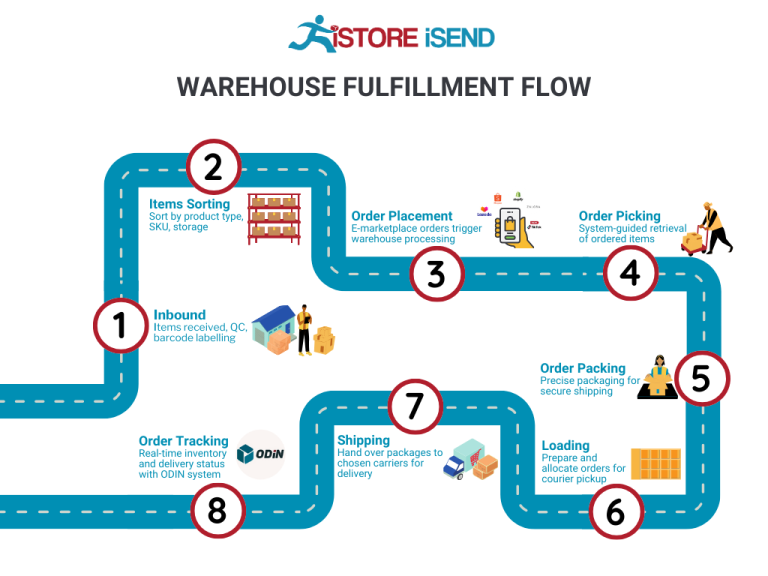
-
Customer Service: Amazon manages customer inquiries and returns for FBA orders, providing a streamlined experience for both sellers and buyers.
-
Payment: After an order is fulfilled, Amazon deducts applicable fees from the seller’s account and transfers the remaining balance.
Pros of FBA
Prime Eligibility
One of the standout advantages of using FBA is the eligibility for Amazon Prime. Products fulfilled by Amazon automatically qualify for Prime, which can significantly increase sales. Prime members are more likely to purchase items that come with the Prime badge, as they value fast, free shipping.
Customer Trust
Amazon is a trusted platform with millions of users. By utilizing FBA, sellers can benefit from Amazon’s reputation. Customers are often more willing to purchase items that are fulfilled by Amazon, knowing they will receive reliable service and support.
Multi-Channel Fulfillment
FBA is not limited to Amazon sales. Sellers can also use FBA for orders from their own websites or other e-commerce platforms. This multi-channel fulfillment capability allows businesses to centralize their inventory and logistics, simplifying operations.
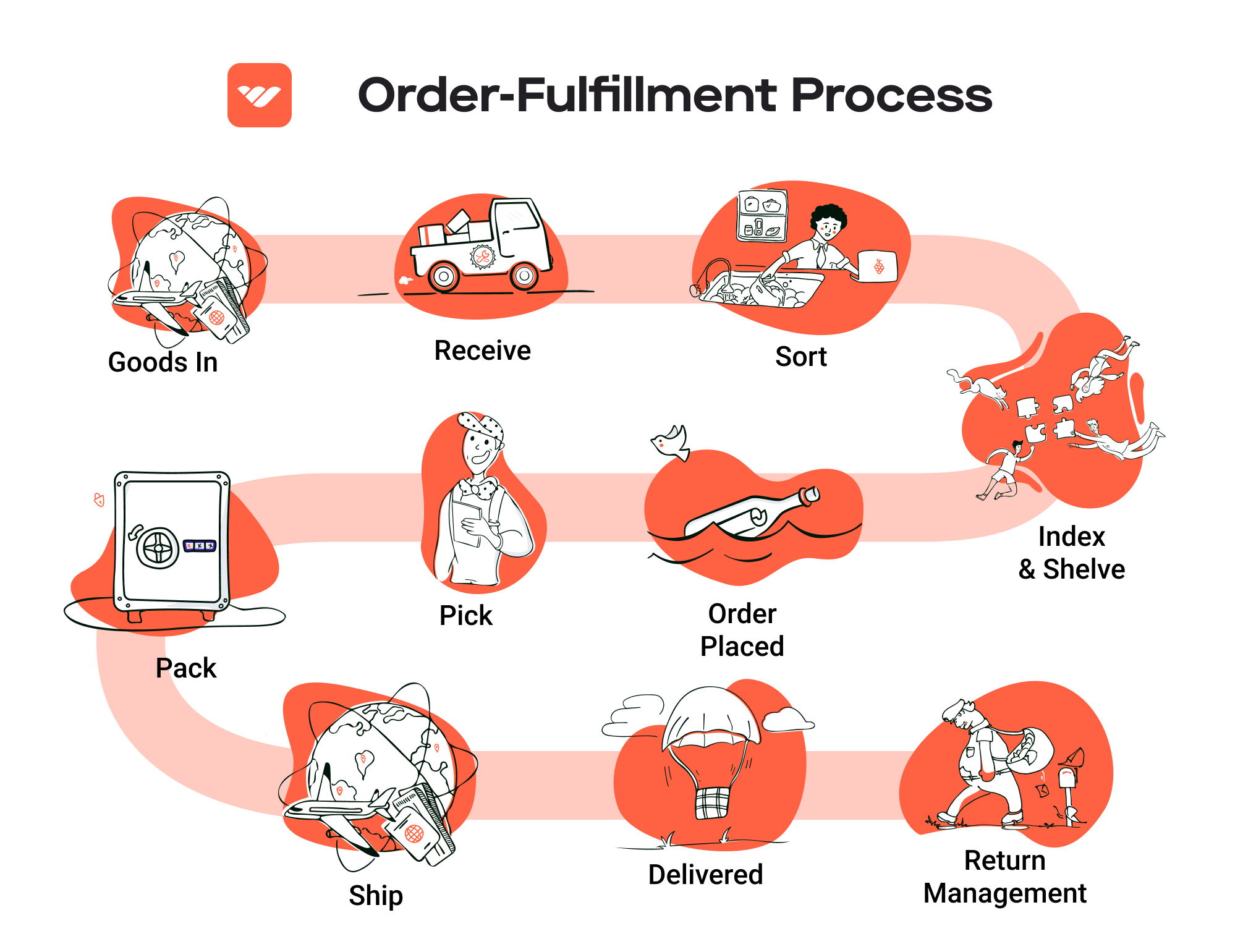
Scalable Operations
FBA allows sellers to scale their operations without the need for extensive logistics infrastructure. As sales grow, sellers can send more inventory to Amazon’s fulfillment centers without having to worry about storage space or shipping logistics.
Automation
FBA automates many aspects of order fulfillment, freeing sellers to focus on other areas of their business, such as marketing and product development. This can lead to improved efficiency and overall business growth.
Cons of FBA
High Fees
One of the most significant drawbacks of FBA is the cost. Sellers must pay various fees, including referral fees, fulfillment fees based on size and weight, and storage fees. These costs can add up, particularly for low-margin products. It’s essential for sellers to thoroughly calculate and understand these fees to ensure profitability.
Strict Inventory Rules
Amazon has stringent guidelines regarding inventory management. Sellers must adhere to specific labeling and packaging requirements, and failure to comply can result in additional fees or rejected shipments. Managing these rules can be time-consuming and complex.
Commingling Risks
FBA products are often commingled, meaning that sellers’ inventory can be mixed with that of other sellers. While this can simplify inventory management, it poses risks. If a customer returns a defective product, the seller may be held accountable, leading to potential losses or negative reviews.
Limited Control
Using FBA means entrusting Amazon with a significant portion of your business operations. Sellers have limited control over the fulfillment process, which can be a concern if they want to provide a unique customer experience or manage their brand’s image closely.
Inventory Storage Limits
Amazon imposes limits on the amount of inventory that can be stored in its fulfillment centers, particularly for new sellers. This can hinder the ability to scale operations quickly, especially during peak seasons when demand is high.
Who is FBA Best For?
Fulfillment by Amazon is best suited for e-commerce businesses that are looking to scale quickly and efficiently. It is particularly advantageous for:
-
Small to Medium-Sized Businesses: These businesses may lack the infrastructure and resources to manage logistics independently. FBA allows them to compete with larger retailers without significant upfront investments in warehousing and shipping.
-
Sellers with High-Volume Products: For those selling fast-moving consumer goods, the ability to leverage Amazon’s Prime service and extensive logistics network can lead to increased sales and visibility.
-
Brands Seeking Trust and Credibility: New sellers or brands that are not yet well-known can benefit from Amazon’s established reputation, helping them gain customer trust more rapidly.
-
Multi-Channel Sellers: Businesses selling across various platforms can benefit from centralized inventory management and logistics through FBA.
In conclusion, while FBA offers numerous advantages such as access to Amazon Prime and streamlined operations, it also presents challenges, including high fees and strict inventory management rules. Businesses should carefully evaluate their product margins, operational capabilities, and growth strategies before committing to FBA.
Core Services Offered by Fulfillment Centers
Inventory Management & Warehousing
Fulfillment centers provide comprehensive inventory management and warehousing solutions that are crucial for e-commerce businesses aiming to scale efficiently. These facilities are designed to store products in a systematic manner, allowing for real-time inventory tracking and management.
What It Is: Inventory management involves monitoring stock levels, managing replenishment, and ensuring that products are available when needed. Fulfillment centers employ advanced inventory management systems that integrate with e-commerce platforms, providing businesses with visibility into their stock levels, sales trends, and reorder points.
Benefits: For e-commerce businesses, effective inventory management minimizes the risk of stockouts or overstock situations. By accurately tracking inventory, businesses can reduce holding costs and improve cash flow. Additionally, fulfillment centers often provide analytics and reporting tools that help businesses make informed decisions about inventory purchases and product launches, ultimately leading to more efficient operations and increased profitability.
Pick and Pack Services
The pick and pack process is a critical service offered by fulfillment centers that directly impacts order fulfillment speed and accuracy.
What It Is: Once an order is placed, fulfillment centers use a systematic approach to “pick” the items from the shelves and “pack” them for shipment. This process includes verifying items against the order, packaging them securely, and labeling them for delivery.
Benefits: Utilizing professional pick and pack services allows e-commerce businesses to streamline their order fulfillment process. This not only speeds up delivery times—an essential factor in customer satisfaction—but also reduces errors in order fulfillment. With fewer mistakes, businesses can enhance their reputation and foster customer loyalty. Furthermore, outsourcing this process allows companies to focus on their core competencies, such as marketing and product development, rather than the logistical complexities of order fulfillment.
Kitting and Assembly
Kitting and assembly services are essential for e-commerce businesses that offer products requiring assembly or bundling before shipment.
What It Is: Kitting involves grouping together multiple products into a single package or kit. This can include assembling components of a product or creating promotional bundles. Fulfillment centers have the capabilities to assemble these products efficiently, ensuring that they meet quality standards before shipping.
Benefits: Kitting and assembly services can significantly enhance the customer experience by offering ready-to-use products. For example, businesses can create gift sets, promotional kits, or multi-item bundles that provide added value to customers. This service not only saves time for the business but also allows for better inventory management by reducing the number of individual SKUs. Additionally, well-assembled kits can increase average order value, as customers are often willing to pay more for convenience and perceived value.
Returns Management (Reverse Logistics)
An effective returns management process is vital for maintaining customer satisfaction and loyalty in e-commerce.
What It Is: Returns management, also known as reverse logistics, involves the process of handling returned items efficiently. Fulfillment centers manage this process by inspecting returned products, restocking them if they are in sellable condition, and processing refunds or exchanges as necessary.
Benefits: A well-structured returns management system is crucial for e-commerce businesses, as it can significantly influence customer perceptions and future purchasing decisions. By providing hassle-free return processes, businesses can enhance customer trust and satisfaction. Furthermore, effective returns management can help identify trends in returns, allowing businesses to make informed adjustments to their product offerings or marketing strategies. This not only improves customer retention but can also lead to cost savings by reducing the number of returns through better quality control and accurate product descriptions.
In conclusion, partnering with a fulfillment center offers a myriad of core services that are essential for e-commerce businesses looking to scale efficiently. By leveraging services such as inventory management, pick and pack, kitting and assembly, and returns management, businesses can streamline their operations, improve customer satisfaction, and ultimately drive growth. As e-commerce continues to evolve, optimizing these logistics processes will be critical to staying competitive in the marketplace.
How to Choose a Fulfillment Partner: A 6-Point Checklist
Location & Warehouse Network
Importance:
The geographical location of your fulfillment partner’s warehouses can significantly impact shipping times and costs. A partner with strategically placed facilities can reduce transit times to your customers, enhancing their experience and potentially increasing sales.
Questions to Ask:
1. Where are your warehouses located? How does this align with my target market?
2. Do you have a network of warehouses that allows for regional distribution?
3. What are your shipping options and costs for various locations?
Technology & Integrations
Importance:
In today’s digital age, the ability to integrate technology into your operations is crucial for efficiency. A fulfillment partner should offer robust technology solutions that can seamlessly integrate with your e-commerce platform, inventory management systems, and other tools.
Questions to Ask:
1. What technology platforms do you use for inventory management, order processing, and tracking?
2. Can your system integrate with my existing e-commerce platform (e.g., Shopify, WooCommerce, Amazon)?
3. Do you provide real-time tracking and analytics? How can I access this information?
Specializations (e.g., Cold Storage, Oversized Items)
Importance:
Not all fulfillment partners are equipped to handle every type of product. If your business deals with specialized items—such as perishables that require cold storage or oversized products—you need a partner that can accommodate these needs.
Questions to Ask:
1. Do you have experience handling my specific product type? What special services do you offer?
2. What kind of storage facilities do you have? Are they climate-controlled if needed?
3. How do you manage the handling and shipping of specialized items?
Scalability & Capacity
Importance:
As your business grows, your fulfillment needs will evolve. A partner should be able to scale with you, accommodating increased order volumes without compromising service quality. Understanding their capacity helps ensure they can support your growth.
Questions to Ask:
1. What is your current capacity, and how do you handle peak seasons or unexpected surges in demand?
2. How do you plan to scale your operations as my business grows?
3. Can you provide examples of how you have supported other clients through periods of rapid growth?
Pricing and Contracts
Importance:
Understanding the pricing structure and contract terms is essential to avoid unexpected costs and ensure that the partnership is financially viable. A clear pricing model will help you budget accurately and maximize profitability.
Questions to Ask:
1. What is your pricing structure? Are there additional fees (e.g., for storage, handling, returns)?
2. Can you provide a detailed breakdown of all potential costs?
3. What are the terms of the contract? Are there any long-term commitments, and what is the process for termination?
Customer Support & Reviews
Importance:
Quality customer support is critical in a fulfillment partnership. Issues can arise at any time, and having responsive support can make a significant difference in resolving problems quickly. Additionally, reviews and testimonials can provide insight into the partner’s reliability and service quality.
Questions to Ask:
1. What kind of customer support do you offer? Are there dedicated account managers?
2. What are your response times for customer inquiries or issues?
3. Can you provide references or case studies from current or past clients? What do your online reviews say about your service?
Conclusion
Choosing the right fulfillment partner is a critical decision for your e-commerce business. By carefully evaluating potential partners using this checklist, you can ensure that you select a provider who aligns with your operational needs, supports your growth, and enhances your customer experience. Remember, the right partner can not only streamline your logistics but also contribute to your overall success in the competitive e-commerce landscape.
Understanding Fulfillment Pricing: A Breakdown of Common Fees
Initial Setup Fees
When you begin using a fulfillment service, you may encounter initial setup fees. These fees can vary significantly depending on the provider and the complexity of your inventory. Initial setup fees often cover account creation, integration with your e-commerce platform, and the configuration of your inventory management system.
Typically, these fees are a one-time charge and can range from a few hundred to several thousand dollars, depending on the provider’s capabilities. Factors that influence the cost include the number of SKUs you have, the level of customization required, and whether you need additional services like branding or custom packaging.
Receiving Fees
Receiving fees are charged when your products arrive at the fulfillment center. These fees cover the cost of unloading, inspecting, and storing your products. The calculation of receiving fees is usually based on the volume of goods received, often measured in units or pallets.
For instance, you might encounter a fee structure where the first 100 units are charged at a lower rate, while additional units incur a higher fee. Some providers may also charge based on weight or dimensions, particularly for oversized items. Understanding your receiving fees is crucial, as they can significantly impact your overall fulfillment costs, especially during peak seasons.
Storage Fees (per pallet/bin)
Storage fees are incurred when your inventory is stored in a fulfillment center. These fees can be calculated on a per-pallet or per-bin basis, depending on how the provider manages their warehouse space.
For example, a typical storage fee might be charged monthly and based on the cubic footage your products occupy. This means that larger products or a higher volume of inventory can lead to increased storage costs. Additionally, many providers have different rates for standard storage versus long-term storage, with the latter usually incurring higher fees after a set period (often six months). Understanding these fees is critical for managing your cash flow and ensuring your inventory turnover is optimal.
Pick & Pack Fees (per item/order)
Pick and pack fees cover the labor involved in retrieving your products from storage and preparing them for shipment. These fees are generally charged per item or per order, depending on the provider’s pricing structure.
For instance, a fulfillment center may charge a flat fee for picking each item, in addition to a packing fee that covers the cost of materials and labor. Some providers might also offer tiered pricing, where the cost per item decreases as the volume of orders increases. This fee is particularly important to consider, as it can vary widely based on the complexity of your orders—more intricate orders with multiple items will typically incur higher pick and pack fees.
Shipping Fees
Shipping fees are a crucial component of fulfillment pricing, representing the cost of delivering your products to customers. These fees can be calculated based on several factors, including the weight and dimensions of the package, the shipping method selected (standard, expedited, etc.), and the destination.
Most fulfillment centers negotiate shipping rates with carriers, which can often lead to significant savings for businesses, especially those with high shipping volumes. It’s essential to understand how these fees are structured, as they can fluctuate based on carrier rates and seasonal demand. Additionally, some fulfillment providers may offer flat-rate shipping options or discounted rates for specific destinations, which can be beneficial for budgeting your logistics costs.
Tips for Getting an Accurate Quote
-
Provide Detailed Information: When seeking quotes, provide potential fulfillment partners with detailed information about your product specifications, inventory volume, and order frequency. This will allow them to give you a more accurate estimate.
-
Understand Fee Structures: Familiarize yourself with the different types of fees involved in fulfillment services. Ask providers to break down their fee structures so you can compare them effectively.
-
Consider Additional Services: If you require additional services such as kitting, custom packaging, or returns management, ensure these are included in your quote. Some providers may bundle these services into their pricing, while others may charge separately.
-
Negotiate: Don’t hesitate to negotiate terms and pricing with fulfillment providers. If you’re anticipating high order volumes, you may be able to secure better rates.
-
Use a Calculator: Many providers offer online calculators that can help you estimate your fulfillment costs based on your unique needs. Utilize these tools to get a clearer picture of potential expenses.
By understanding these common fulfillment pricing models and considering these tips, you can make more informed decisions that support your e-commerce growth while maintaining healthy margins.
Frequently Asked Questions (FAQs) about Fulfillment
1. What are Amazon fulfillment fees?
Amazon fulfillment fees are charges associated with using Amazon’s Fulfillment by Amazon (FBA) service, which handles storage, packaging, and shipping of products sold on the Amazon platform. These fees typically include FBA fulfillment fees based on the size and weight of the products, monthly storage fees for inventory held in Amazon’s warehouses, and referral fees for sales made through the platform.
2. How are FBA fulfillment fees calculated?
FBA fulfillment fees are calculated based on the size and weight of your products. Amazon categorizes products into standard-size and oversized tiers, with specific fee rates for each category. Starting in 2024, Amazon is introducing more granular rate cards to provide clarity on the exact fees applicable to different product sizes.
3. What are referral fees and how do they work?
Referral fees are a commission paid to Amazon for each sale made on their platform. This fee is typically a percentage of the sale price, with rates varying by product category (often around 15% or less). Referral fees are deducted from your Amazon account after the sale is completed, meaning you don’t have to pay upfront.
4. What are the storage fees for FBA sellers?
FBA sellers incur monthly storage fees for inventory stored in Amazon’s fulfillment centers. These fees vary based on the time of year, with higher rates during peak seasons (October through December) compared to off-peak months. As of 2024, Amazon is reducing off-peak storage fees for standard-size products.
5. Are there any additional fees that FBA sellers should be aware of?
Yes, FBA sellers may face additional fees such as:
– Refund administration fees: Charged when a customer returns a product.
– Long-term storage fees: Applied to inventory stored for more than 365 days.
– Removal fees: Charged for removing inventory from Amazon’s warehouses.
6. How much do fulfillment services cost on average?
Fulfillment service costs can vary widely depending on the provider, the size of your operation, and the services offered. For Amazon FBA, sellers can expect to pay fulfillment fees based on product size and weight, along with referral and storage fees. Other third-party logistics (3PL) providers may have different pricing structures, often based on order volume, pick-and-pack fees, and shipping costs.
7. What is the difference between a warehouse and a fulfillment center?
A warehouse is primarily used for storing goods, while a fulfillment center is designed to handle the entire order fulfillment process, including storage, inventory management, packing, and shipping. Fulfillment centers are typically more integrated with e-commerce platforms and focus on delivering fast and efficient order processing.
8. What is a 3PL (Third-Party Logistics)?
A 3PL (Third-Party Logistics) provider is a service that manages logistics and supply chain operations for businesses, including warehousing, transportation, and order fulfillment. Many e-commerce businesses partner with 3PLs to streamline their operations and focus on core business activities, rather than managing logistics in-house.
9. Can I use Amazon FBA and FBM (Fulfilled by Merchant) at the same time?
Yes, sellers can use both FBA and FBM simultaneously. This hybrid approach allows sellers to leverage the benefits of Amazon’s fulfillment network for certain products while maintaining control over other products they prefer to fulfill themselves. It’s essential to manage inventory and pricing strategies effectively when using both fulfillment methods.
10. How do I calculate my overall costs when using Amazon FBA?
To calculate your overall costs when using Amazon FBA, consider the following:
– Product cost: The price paid to source or manufacture the item.
– FBA fees: Include fulfillment, storage, and any additional fees.
– Referral fees: Based on the selling price of your products.
– Shipping costs: If applicable, for sending products to Amazon’s fulfillment centers.
Using tools like Amazon’s Fee Preview Report or third-party calculators can help provide a clearer picture of your potential costs and profitability when selling on Amazon.
Conclusion: Is Outsourcing Fulfillment the Right Move for Your Business?
Evaluating the Benefits of Outsourcing Fulfillment
Outsourcing fulfillment can be a transformative decision for e-commerce businesses looking to scale efficiently. One of the most significant advantages is time savings. By entrusting a fulfillment service with the logistics of storage, packing, and shipping, you free up valuable hours that can be redirected towards strategic initiatives such as marketing, product development, and customer engagement. This delegation not only enhances operational efficiency but also allows you to focus on what you do best—growing your business.
Scalability is another critical benefit of partnering with a fulfillment service. As your sales volume fluctuates, particularly during peak seasons, a reliable fulfillment partner can easily adapt to your needs. This flexibility ensures that you can meet customer demand without overextending your resources or compromising service quality. Whether you’re launching new products or expanding into new markets, an established fulfillment provider can support your growth trajectory seamlessly.
Moreover, leveraging the expertise of a fulfillment partner can lead to improved accuracy and reliability in your logistics operations. These specialists bring industry knowledge and advanced technologies that can optimize inventory management and reduce shipping errors, ultimately enhancing customer satisfaction.
However, choosing the right fulfillment partner is crucial for sustainable growth. Conduct thorough research and consider factors such as location, service offerings, and track record. The right partner can propel your business forward, while the wrong choice may hinder your progress.
Take Action Today
To determine if outsourcing fulfillment is the right step for your business, conduct a comprehensive audit of your current shipping processes. Analyze your operational challenges, customer feedback, and growth ambitions. This evaluation will provide clarity on whether a fulfillment service can enhance your efficiency and scalability. Take the first step towards operational excellence and explore your options today.
Important Disclaimer
⚠️ Important Disclaimer
The information in this guide is for educational purposes. Fulfillment services, pricing, and platform features change frequently. Always conduct your own due diligence and consult with providers directly before making business decisions.
